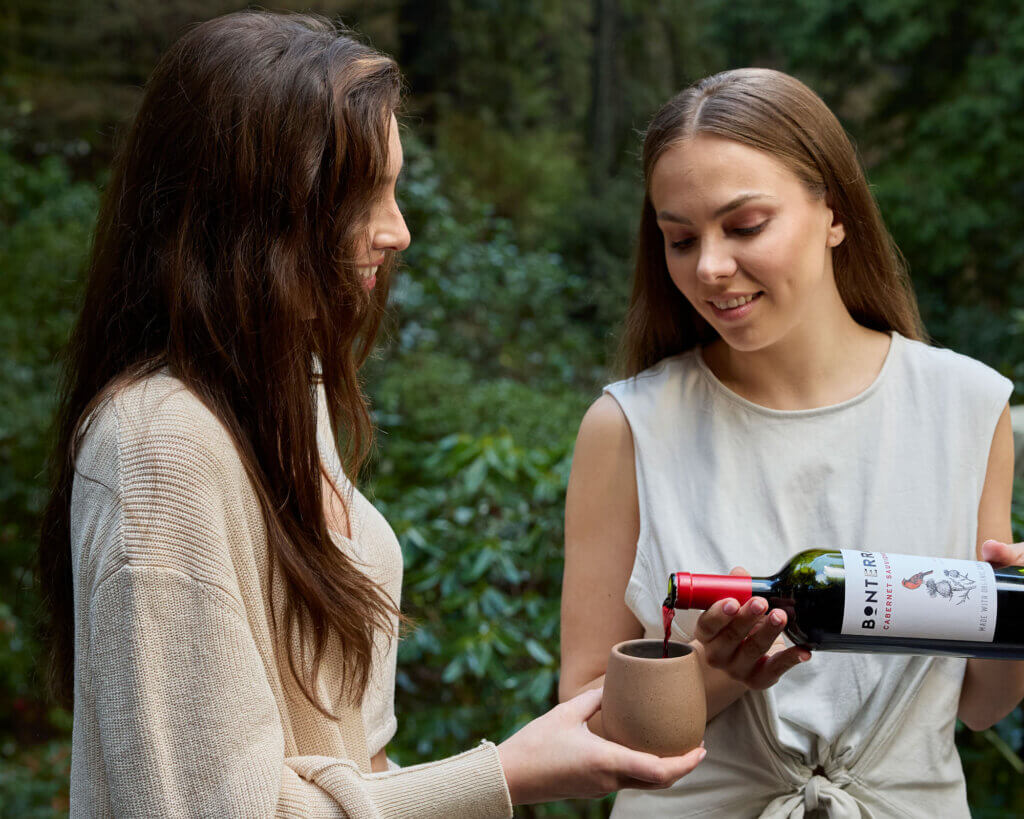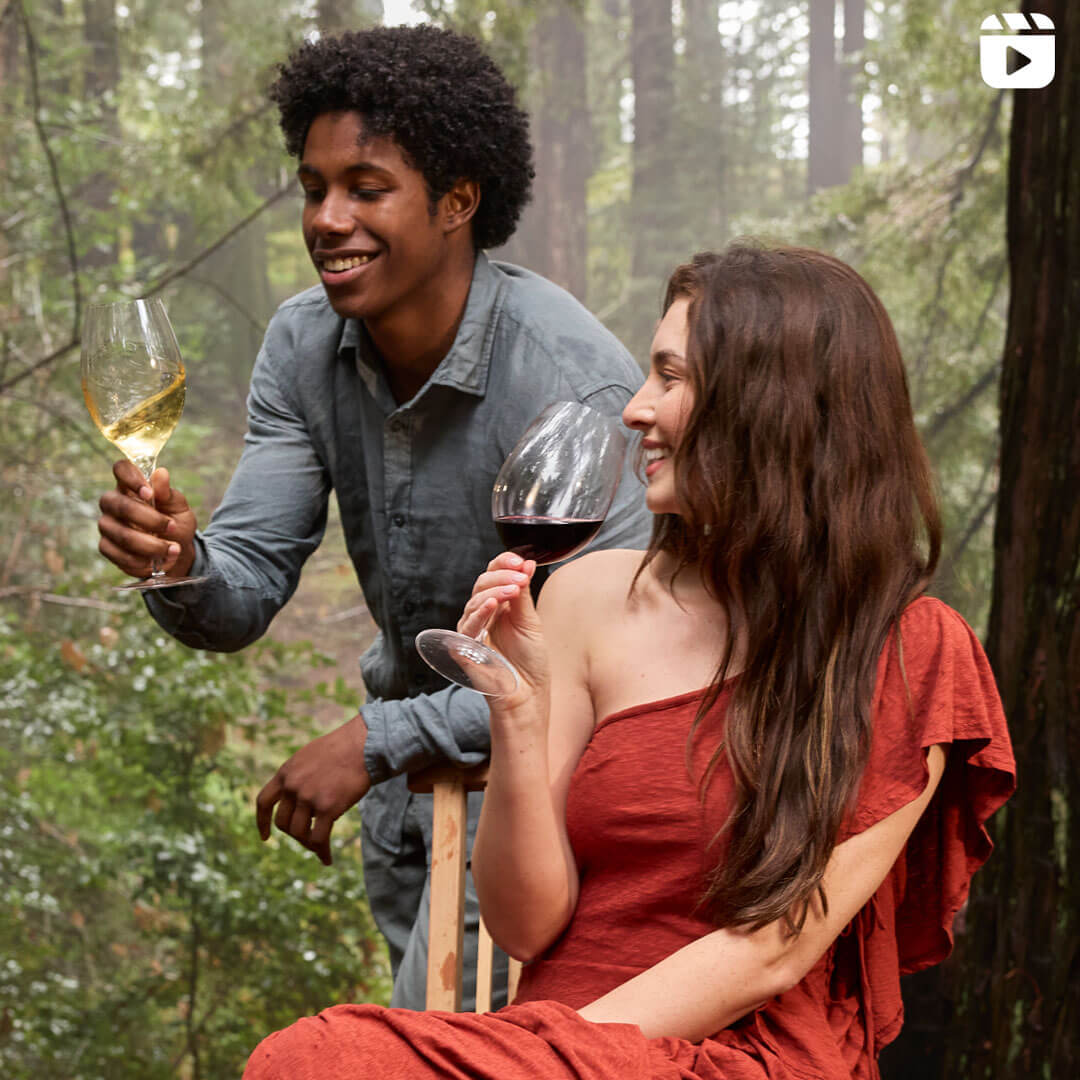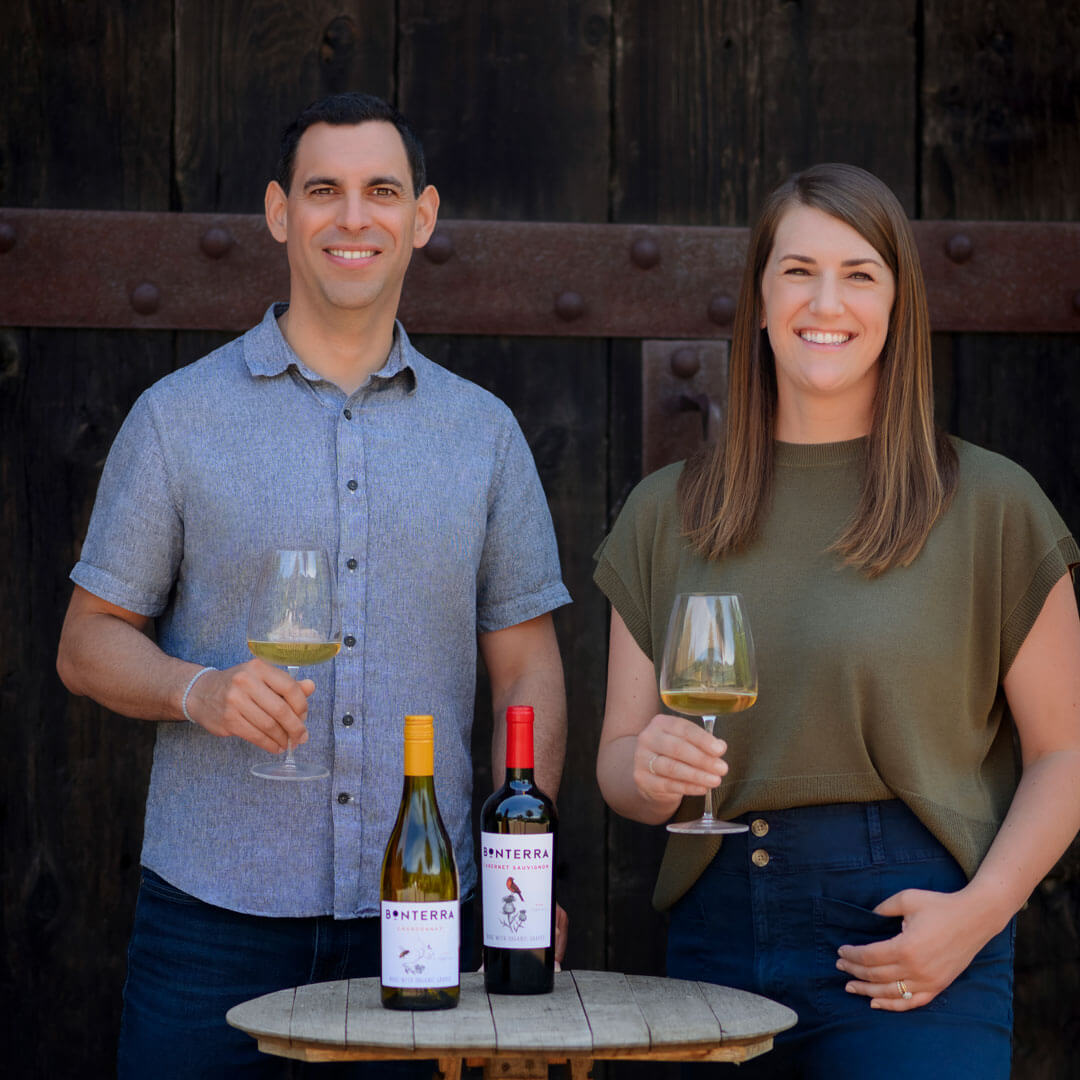Are you new to wine? Welcome! Wine’s wonderfully diverse world is always growing and evolving in exciting and delicious new ways. We know the wide range of options and prices can feel a bit overwhelming, which is why we at Bonterra are committed to providing accessible, high quality wines that are perfect for first-time wine buyers, and long-time wine lovers alike.
Here are our top tips for choosing a great first bottle of wine, and a great second and third bottle, too!
Understanding Wine Basics
A little bit of background goes a long way in wine. Here are the most helpful things to know when you’re just starting out.
Overview of Wine Types
Most wines in the world are either red wine, white wine, or rosé wine. Since most grape juice is clear, wine gets its color from the skins of the grapes being crushed. Red and rosé wines are made from red-skinned grapes. White wines are usually made from white-skinned grapes, but can also be made from red grapes when the skins are removed right away.
Just like still wines, sparkling wines can be red, white or rosé depending on which grapes are used and how the wine is made. Sparkling wines start out as still (regular, non-sparkling) wines, to which winemakers add bubbles through a variety of techniques.
There are many different types of wine grapes in the world, and each grape variety (a.k.a. varietal) brings its own unique color, aroma, flavor and personality to the wine. This is why most wines in the world will put the name of the grape variety on the label to help people understand what the wine is likely to taste like.
A winemaker’s decisions in the cellar (and the quality of the grapes they use) can also dramatically influence how the finished wine will taste. It’s similar to how two people making the same recipe can have very different results, depending on the ingredients they used, their own taste preferences, and unique taste buds.
Key Wine Terms
Let’s review some key terms that are helpful to use when describing wine.
When we say a still wine is “dry,” it means that all the sugars in the grapes have fermented away in the winemaking process. A dry wine generally does not taste sweet, although its fruity aromas often remind us of sweet things – like juicy black cherries, watermelon, or chocolate. An “off-dry” or “sweet” wine, in contrast, really is sweet: there is still some sugar in the wine after winemaking is complete.
“Acidity” comes up a lot in wine. Too much acidity in wine can taste sharp, sour and searing; too little makes a wine taste flat, dull, and one-dimensional. A balanced amount of acidity helps a wine taste refreshing, helps it pair better with food, and can even help it age.
“Tannins” are a chemical compound found in grape skins, seeds and stems – and the oak used for wine barrels. Tannins create more of a feel than a taste, and we experience them as a drying, gripping sensation on the tongue, much like what we feel with strong black coffee or tea. Tannins bring texture and body to wine, and play an important role in preserving wine long term. As they break down with time, tannins become softer and smoother.
Popular Beginner-Friendly Varietals
Which varieties of wine are best when you’re just starting out? We’ve found that Pinot Noir (a red) and Chardonnay (a white) are great for new wine drinkers because their wines are typically soft and smooth, with balanced acidity. Lighter wines are a great option for newer wine drinkers.
For your first bottle of wine, we think you can’t go wrong trying a Pinot Noir or Chardonnay from California – something like Bonterra Pinot Noir or Bonterra Chardonnay, which are both made with organic grapes. These wines invite you to experience the pure, classic flavors of these varieties, along with the satisfaction of knowing they were sustainably produced.
Top Recommendations for Beginner Wines
Ready to dig a little deeper? Take a peek at all our top recommendations for new wine drinkers, whether you’re on the hunt for a great white, red or rosé.
The Best White Wines for Beginners
Chardonnay is one of the most popular white wines for beginners, thanks to its full, smooth texture and ripe flavors of apple and pear. Chardonnay aged in oak barrels will also have a buttery, butterscotch caramel flavor that many people enjoy. This is a wine to snuggle up with, or pair with a plate of triple-cream cheese.
We also recommend Pinot Gris – also called Pinot Grigio. Wines from this grape usually have a lighter texture than Chardonnay, and soft flavors of lemon, lime, peach and pear. We love this easy, breezy white for summer salads, seafood pastas, or just having a glass with friends.
Sauvignon Blanc is another great first white, especially for those of us who like tart flavors. The grape’s zesty acidity and flavors of juicy citrus, pineapple, and fresh herbs make it incredibly refreshing, fun to drink, and delicious with everything from goat cheese to chicken tacos.
The Best Red Wines for Beginners
In the red wine department, we suggest new wine drinkers seek out wines with soft tannins and plenty of delicious fruit flavors. Pinot Noir is one of the lightest red wines, with a silky smooth texture and fragrant fruit aromas. Bright cherry, pomegranate, and sometimes earthy flavors pack a lot of flavor enjoyment in a versatile, food-friendly red wine.
If Pinot Noir is a little light for your taste, try a bottle of Merlot. Wines from this red grape typically have rich fruity flavors of plum and berries, with a velvety texture that fills your mouth. Merlot makes a fantastic pairing with steaks, chops and rich stews.
For people who like a bit of spice, we recommend picking up a bottle of Zinfandel – the red kind. (There is also an off-dry “White Zinfandel” made from the same grape, which tastes entirely different.) Red Zinfandel wine has smooth tannins with lots of bold fruit flavors and peppery spices. This is a great wine for rich food like spicy BBQ or mole.
Rosé Wines
The word rosé just means pink – it’s not a variety name – so rosé wine can be made from just about any red grape. Some rosés (like White Zinfandel) can be sweet, but most pink wines these days are dry, with fresh fruit flavors like watermelon, strawberry, and peach, and a crisp acidity that makes them great with a wide variety of food. A dry rosé like our Bonterra Rosé is a great first bottle to try, with plenty of bright fruit flavors and a mouthwatering finish.
Developing Your Wine Palate
Whether you’re considering a career in wine, or just want to broaden your understanding a little, the best way to do it is to taste more wine! Here are some of our best tips for developing your palate.
Try a Variety of Different Wines
The most important thing to remember as you’re learning about wine is that taste is subjective. Each of us has unique preferences, taste memories, and differences in how our senses of smell and taste work. What we taste and smell is truly unique to us – which is why tasting wines yourself is the best way to learn.
If there’s one variety you love, try versions from different wine producers and growing regions to compare the experience. Don’t be surprised if your preferences shift with time. Just about everyone’s taste in wine changes as their palates experience different styles and varieties and as they themselves change through the years. Everyone has their own journey!
Tasting Tips for Beginners
We’ve found it helps to keep notes when you’re tasting, so you can keep track of your impressions and the wines you did (or didn’t) enjoy. What does this wine smell like? What kind of weight and texture does it have? What does it taste like? Does the flavor linger a long time or disappear pretty quickly?
Trying to pick out and identify particular scents and flavors in wine helps train our brains to recognize those scents and flavors more easily in the future. Just by focusing on the aromas in our wine tasting glass, we can strengthen both our sense of smell and scent memory, opening our eyes (noses?) to the myriad of other delicious scents around us.
Pairing Wine with Food
In our opinion, the simplest path to a good wine and food pairing is by matching textures. A silky piece of salmon loves a silky Pinot Noir, and a creamy chicken casserole wants a creamy Chardonnay. Rich and velvety stews love Merlot, while delicate seafood likes light and lemony Pinot Grigio or Sauvignon Blanc.
Don’t be afraid to try different pairings to see which you prefer. Our Bonterra collection of wines has approachable bottles intended to help you explore the world of wine and food pairing, and discover your new favorite combinations.
Whatever your first bottle or wine pairing happens to be, share your experiences with us on social! Wine always tastes better when shared.
Discover Your New Favorite Wines at Bonterra
Choosing the best wine for beginners is all about exploring your preferences and enjoying the journey. At Bonterra, we pride ourselves on crafting high-quality, organic wines that are perfect for both new and experienced wine drinkers.
Whether you’re starting with a crisp white wine or a smooth red wine, Bonterra’s commitment to sustainability and exceptional flavor ensures every bottle is a great choice for your wine journey. Learn more about our organic winery.If you’re looking for a way to receive different types of wines, sign up for the Bonterra wine club. Explore our full collection of Bonterra wines and discover wine online to begin your wine adventure. Cheers!




